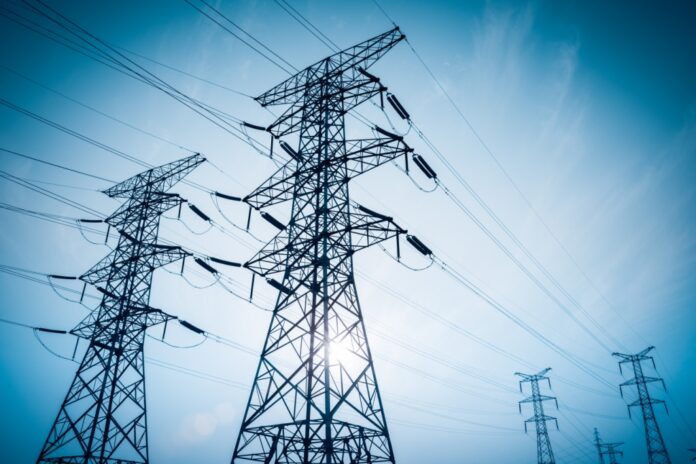On the 29th of August, the Senate Standing Committee on Power convened to address the pressing issue of “unprecedented electric bills” that have sparked nationwide protests. The committee, led by Senator Saifullah Abro, tasked the Power Division with compiling a comprehensive ledger of electricity defaulters and outstanding dues across all Distribution Companies (DISCOS).
Representatives from the Power Division revealed that the capacity payment to Independent Power Producers (IPPs) for the current fiscal year had reached a staggering total of Rs1.3 trillion. They identified the dollar-to-rupee conversion rate, imported coal prices, RLNG, and KIBOR as the primary drivers behind these capacity payments.
Electricity theft had incurred a cost of approximately Rs 467 billion, while the government had earmarked Rs 976 billion for electricity subsidies in the current fiscal year’s budget.
Senator Saifullah Abro castigated the IPPs, branding them as the main culprits behind the exorbitant electricity costs. He underscored that IPPs had inflated the invoices of three significant power plants—a fact acknowledged by the Secretary of the Power Division. Senator Abro emphasised that resolving the IPP issue is critical for effectively mitigating the electricity crisis.
The committee has instructed the Power Division to provide a list of defaulters and outstanding dues for each DISCO at their next meeting. This narrative serves as a stark reminder of the complexities and challenges inherent in managing a nation’s power infrastructure.
The matter transpires amidst a maelstrom of dialogues, brimming with a multitude of stakeholders vociferously advocating for a comprehensive renegotiation of the contracts binding the IPPs. A handful of audacious individuals have even commandeered the media platforms, proposing that the IPPs should cease operations in their entirety. So, what’s going on?
The problems of having just one customer
“One fundamental question that has been repeatedly raised concerns the payment of capacity payments to IPPs. This discussion arises due to a need for clarification on the tariff structure, explains Zaheer Ghanghro, Chief Executive Officer at Halmore Power Generation and Director at Lalpir & Pakgen Power”,
“No one wants to understand that IPPs have a single buyer, hence the capacity payment. This will only change once the market structure changes, but that is only possible after the sector has paying capacity.” Ghanghro adds.
It is pertinent to mention that Pakistan’s IPPs were built on a “take-or-pay” model. A “take-or-pay” provision in a purchase contract guarantees the seller a minimum portion of the agreed-upon payment if the buyer does not follow through with actually purchasing the full amount of goods.
This type of agreement benefits the supplier by reducing the risk of losing money on any capital spent to produce the product it is trying to sell. It also benefits the buyer by allowing it to negotiate a lower price elsewhere. With this kind of contract, the company either takes the product from the supplier or pays the supplier a penalty. For any product taken, they agree to pay the supplier a certain price, say $50 per ton. Furthermore, up to an agreed-upon ceiling, the company is required to pay the supplier even for products not taken. This “penalty” price is lower — say $40 per ton.
Ruhail Mohammad, Chief Executive Officer at Lucky Electric Power Company, elucidates, “The power plants were built on take-or-pay contracts because no lender will provide the requisite finances unless there is a defined offtake for the electricity for which the government was the only buyer. Unlike commodities — where there are millions of buyers and you can satisfy the lender based on demand projections — there is no such thing in the power sector.”
Mohammad adds, “The large chunk of capacity payments remains debt servicing and return on equity injected.” He continues, “The debt repayment period is normally 10 years where the IPPs are still recouping the cost of investments undertaken”
So why have these capacity payments risen so exponentially now?
Ghanghro explains, “A significant part of the IPP tariff is fuel cost; if we manage that, generation cost can come down. This recent mess and consumer tariff increase are due to transmission and distribution losses — mainly theft. Paying customers are being forced to pay for stolen electricity and inefficiencies of DISCOs; therefore, more paying customers are shifting to solar/net metering.”
Mohammad adds, “The tariff for starters was an upfront one set by NEPRA after conducting a rigorous study. It was not something forced upon the government by the industry at that time.” He continues, “The problem with capacity payments right now is that tariff was based on certain demand assumptions made when tariff was set. Unfortunately, demand for electricity in Pakistan has actually gone down which in turn has led to higher per unit capacity charge. The capacity charge for the newer plants are in US dollars (mainly due to Chinese US$ denominated loans) which has further aggravated the situation as the Rupee has depreciated almost 300% against the US$ in the last 6 years.”
How does this work?
Consider capacity payment per unit as a mathematical equation: tariff divided by units of electricity consumed. As electricity consumption has reduced — the denominator has decreased — pushing up per unit capacity cost.
The severity of the capacity payments subsequently is dependent on the aforementioned factors. How dire is the state of these underlying factors? The Committee’s terming the matter “unprecedented” should perhaps make the matter self explanatory.
Where do we go from here?
“The decision-makers in the sector are sadly deprived of the accurate data they need to address the various problems. Consequently, we face the dilemma that we cannot control what we cannot measure. Ideally, we should be able to trace every unit of electricity generated in a power plant till the end user, but given the complexity of the system and the number of consumers in our country, this is not feasible in the short term, Ghanghro adds.
What alternatives do we have then? Profit came across a plethora of suggestions in conversation with different players in the industry.
These spanned from modest reforms such as metering the electricity from generation to all the 11 kV feeders in the country, providing electricity to at least industrial clients at a subsidised rate for one to two years with some form of forecasting whereby they can determine if energy uptake will increase to improve the aforementioned denominator, and shifting state gas based electricity power plants from RLNG to indigenous gas.
We also encountered more radical reforms in terms of privatising the entire distribution network, or renegotiating the Chinese portion of the debt on a government-to-government level.
Are any of these viable? That is perhaps a tale for another time.

























Hi Daniyal ,
In that article you mentioned so many things that go over ordinary people head , they dont want to go through minute details rather upfront truth. This article was absolutely stunning.
“Whatsapp: +1-2-5-2-5-1-2-0-3-9-1″”Cybergenie (@) Cyberservices. Com”My way of showing CYBER GENIE exactly how thankful I am for everything they did for me at one of the worst times of my life is by uploading this rating. When I was having concerns about turning over $150,000 worth of Bitcoin theft, Cyber Genie Hack Pro was courteous. My concerns about the likelihood of finding or recovering my misplaced money were reinforced by the irrefutable evidence provided by Cyber Genie. After a few sessions with, Cyber Genie boss, I feel confident in the decisions I took. Despite the fact that it took an extended period, I ultimately got every penny I thought I had lost to Bitcoin investment theft. When I felt like my entire world had smashed down around me, their expertise and vast knowledge were very much appreciated. Cyber Genie crypto recovery team is informed about it, and I wholeheartedly recommend it.
Can you tell the readers when agreements with IPPs will conclude ? I understand there are IPPs who started back in mid of 1990s. If the term was 20 or 25 years then we should be getting rid of these IPPs by any time now !
یہ معاہدہ کب ختم ہو گاipps والا